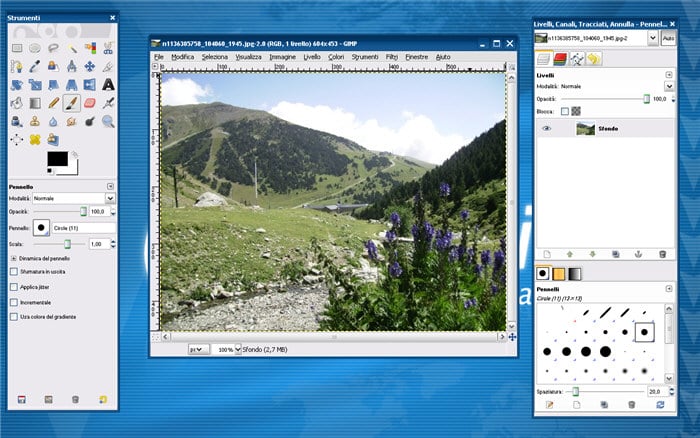

It is difficult to get away from the fact that, as incredible a piece of software as GIMP is, Paint.NET is undeniably the more accessible of the two. On the other side, GIMP can feel a little sluggish, even on relatively powerful systems – but if you're using the full power of the image editor, the chances are you are taking things seriously and have a serious computer to work with.

Of the two programs on test here, Paint.NET is undoubtedly the faster and lighter, performing well even on older hardware. Image editing is a processor and graphic intensive process, so the more powerful your computer the better your experience will be. Image credit: Paint.NET Ease of use and performance GIMP also supports automation of common tasks through scripts. Yes, you can use genuine Photoshop plugins in GIMP – although not all are guaranteed to work. The image editor is already very powerful, but the range of options can be further extended through not only GIMP-specific plugins, but also with Photoshop plugins. GIMP users are rather spoiled for choice when it comes to plugins. Unfortunately, it is only possible to use plugins that have been especially coded for Paint.NET, but there are alternative to many popular tools that have been ported across. Some of these are installed by dragging and dropping files into the relevant folder, while others have installers to make things easier for you. For Paint.NET, there is an extensive library of individual plugins and plugin packs. The capabilities of both GIMP and Paint.NET can be extended through the use of plugins, and there's a wide range available for each. GIMP and Paint.NET can both be used as photo editors, but the range of tools available in the former also means that it is full capable as a tool for creating original work. There is support for layers, albeit rather more basic than in GIMP, and a range of filters, level adjustments and effects.īoth programs support brushes, but GIMP's handling of this is rather more sophisticated and advanced. Everything you need to fully unleash your creative side.Īll this said, Paint.NET is a more than capable program, and you'll find everything you need not only for day to day photo editing, but also for those occasions when you feel like getting a little more creative. There are also powerful colour and level correct options, path creation, masking options and so much more. Both GIMP and Paint.NET support layers, and both have all of the basic image editing options and tools you would reasonably expect to find.īut even a cursory glance at the menus and toolbars of GIMP makes it clear that this is the more feature-packed of the two, and you'll find numerous Photoshop-style tools such as the healing brush, the perspective tool and much more besides. Of the two, there's no denying that GIMP is the more powerful of the two programs, but that does not necessarily mean it is the best. Paint.NET offers limited interface personalisation through the ability to show and hide different tool panels, and there are also a handful of color schemes to choose from so you can make the program match the rest of your system. Even so, for Windows users, GIMP has a far less familiar feel, and this can take a while to get used to. The software now defaults to a single window mode, but it is possible to break out into multiple parts if this is your preference. In fact, it was the interface that many people used to find off-putting about GIMP – particularly the way it was made up of multiple individual windows. Paint.NET looks like fairly traditional Windows program, while GIMP is a little more unusual thanks to the fact that it started life on other platforms. Take a look at GIMP and Paint.NET and you'll notice a marked difference in appearance. Speaking of which, let's take a look to see how these two image editors compare. It's immensely powerful and often billed as an alternative to Photoshop, but it has something of a learning curve, which can prove off-putting to newcomers. GIMP is available for Windows, macOS and Linux. But there is absolutely no obligation to opt for the paid-for version, and you miss out on literally nothing if you choose not to pay. It remains a Windows-only program, and while it is possible to download the software free from the developer's website, you also have the option of buying it from the Microsoft Store if you like the idea of making a financial contribution.


 0 kommentar(er)
0 kommentar(er)
